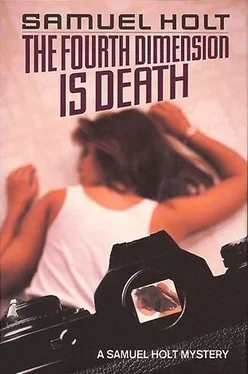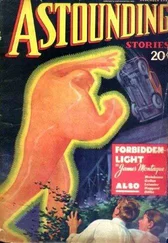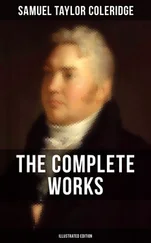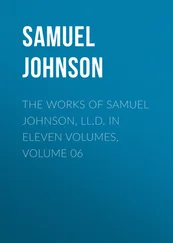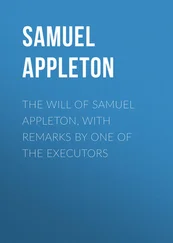I had a sudden mental image: The man who looks like me crosses the street toward my house. It is night. He could easily be me. A dark figure rises behind him, lifting the two-by-four. “Oh,” I said.
I still have family out on Long Island, a number of uncles and aunts and cousins, so phone calls from all of them were among the messages waiting for me when I walked downtown and home that afternoon, after lunch in the Oyster Bar with Mort. But those messages were swamped numerically by the calls from reporters. The murder of a celebrity lookalike in front of the celebrity’s house is a natural media event, so the phone had not been still since the news had broken. In fact, Robinson told me, shortly after I’d left for Mort’s office this morning several journalists had arrived at the house, clearly prepared to camp on my doorstep forever if necessary. Fortunately, Robinson’s phone call to the precinct had produced a police response heavy enough and irritable enough to end that nonsense right away. (Though, as it later turned out, both the New York Post and the National Enquirer had kept photographers parked down the block, who had recorded for posterity, with the aid of telephoto lenses, the fact of my midafternoon return.)
My PR outfit is in Los Angeles. I phoned there, talked to a girl who always wants me to call her Babs — I never do — and she gave me the name and number of their associated New York firm, who would deflect all further public attention. So I called them — the woman there introduced herself crisply as Ms. Henderson — we worked out my simple and dignified public statement on the tragedy, and Ms. Henderson went briskly off to erect that necessary buffer. Only then did I begin the calls to reassure my kin that their most famous relative was still alive and intact, and when Uncle Edgar said, “Get the hell out of that city a minute. Come on out here,” I found myself saying, “You’re right.”
There were only two more calls to make, then; the first being to Anita, who agreed with Uncle Edgar at once: “Go,” she said, “get away from it, call me when you get back.”
“Can you take time off from the restaurant?”
“You know I can’t,” she said. “Call me tomorrow.”
I laughed. “Stay as long as I like,” I said, “but call you when I get back tomorrow.”
“You got it. Take your time, and be back tomorrow.”
The other call was to the place on West 56th Street where I occasionally rent cars. I ordered a Mercury Montego — one of the few cars in which my long legs can be reasonably comfortable — and one of their guys drove it down to me. At last, leaving Robinson to deal with the house and whatever else might happen, I slipped out of the city just ahead of the rush hour.
After a pleasant evening with relatives, who’ve grown a lot calmer about me since PACKARD went off the air, and a restful night in the guestroom of Uncle Edgar’s clifftop North Shore home, with its morning view of the Sound — a few hardy souls still sailed out there, ignoring the end of summer — I drove back to the city, arriving just at lunchtime, to find Detectives Feeney and LaMarca waiting for me. “I put them in the living room, as before,” Robinson told me, taking my overnight bag.
“Call about having the car picked up, will you?” I asked him, and went into the living room to find the detectives dressed in different but similar clothing and seated in the same chairs as last time. Once again, Robinson had given them coffee. “My lawyer told me you’d be back,” I greeted them.
Feeney raised his eyebrows and grinned at me, saying “He did?” LaMarca didn’t react at all.
I said, “Because of the possibility that I was the one who was supposed to be killed.”
Feeney smiled more broadly, and nodded, either in understanding or agreement. LaMarca, with frowning interest, said, “Do you think that’s so?”
“No,” I told her. “I’ve thought about it, and of course people in my position get crank letters and death threats every once in a while, but that hasn’t happened since my show went off the air. The only person I can think of, in fact, who might want to kill me,” I added, trying to return Feeney’s smile but somehow unable to make contact with it, “is Dale Wormley.”
LaMarca looked disapproving. Feeney laughed, and said, “Killed himself by mistake, huh? Thought he was you.”
“He did think he was me.”
LaMarca was the no-nonsense partner. “We’d like to show you a picture,” she said.
I waited, having not the slightest idea what was coming, as Feeney nodded at his partner and picked up a tan manila envelope from the floor beside his chair. He withdrew an 8 x 10 glossy color photograph — every day, someone was handing me an 8 x 10 photo — and extended it toward me.
It was a close-up, in excellent detail, well lit. The camera looked straight down at a linoleum or tile floor, probably a kitchen floor, of a light cream color. A hand and wrist and part of a forearm were visible on the floor, palm down, fingers partly curled. It was a slender hand and wrist, with pale rose polish on the nails and a small digital watch on the wrist. The clarity was such that I could read the time: 7:48. The sign for AM or PM was too small to make out. Above the hand, in some brownish impasto medium, capital letters were very shakily drawn: S A M, and then a space, and then H (left half of an H). The index finger of the hand was at the right end of the crossbar on the last unfinished letter.
The photo, silent and clear and in beautifully realized color, was chilling. It was also enraging. I heard the tremor of anger in my voice as I said, trying to say it calmly, “Is that blood?”
“Her own blood,” LaMarca said, unnecessarily.
It’s Julie Kaplan, I thought, and visualized that heavy wool-like shawl of hair shrouding her head. I said, “Is that AM or PM?”
They both seemed surprised by the question. “PM,” Feeney told me, then answered my next question before I asked it. “We called here last night. Your man told us where you were and when you’d be back.”
I said, holding up the photo toward them, “Is it Julie Kaplan?”
That also surprised them. Feeney said, “No,” and LaMarca said, “It’s Kim Peyser.”
The name meant nothing to me. Frowning at them, I said, “Who’s that?”
“Julie Kaplan’s roommate,” LaMarca told me, watching my face.
Of course; Julie Kaplan had mentioned the name yesterday. The girl she’d moved in with after leaving Wormley, the one who’d told her she was nuts to think I was Wormley’s murderer. Handing the photo back to Feeney, I said, “Do you have any idea why they faked this?”
“Fake?” Feeney asked me, as though I was trying for a joke he didn’t understand, and LaMarca looked almost outraged as she said, “You don’t think she did it herself?”
“Of course not,” I said. “Do you? The mortally wounded girl writes her killer’s name in her own blood on the floor, managing to write just enough to make it identifiable before she dies? Do you really think that’s what happened?”
“It can’t be discounted,” LaMarca told me.
“Sure it can. The thing’s a fake. Can’t you see that?”
“No,” LaMarca said, and Feeney held the photo at arm’s length, squinting at it, making a putdown routine out of it as he said, “Looks pretty good to me.”
“Oh, for Christ’s sake.” I got to my feet, which startled them both. Realizing they both thought they might reach for their pistols — they believed that hokum — I stopped and faced them and carefully said, “I am going to open that drawer over there and take out a pen and a piece of paper.”
“Okay,” Feeney said.
Читать дальше
